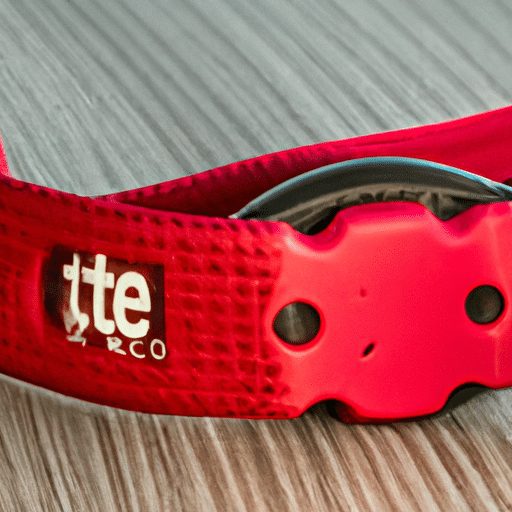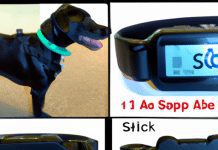Lately, we’ve been perplexed by a rather curious situation – our beloved dog seems to be completely immune to the effects of his shock collar! We initially thought that this training tool would be the ultimate solution to curbing his unwanted behaviors, but to our surprise, he remains unfazed by it. It’s left us wondering: why is our dog not responding to the shock collar? In this article, we’ll explore some possible reasons for this puzzling phenomenon and offer insights into alternative training methods that could prove more effective.
Possible Reasons for Lack of Response
Table of Contents
Improper Use of the Collar
One possible reason why a dog may not be responding to a shock collar is because of improper use. This can include incorrect settings, a poor fit, or inadequate training on how to properly use the collar.
Incorrect Settings
If the shock collar is not set to the appropriate level for your dog, it may not be effective in delivering the necessary correction. It’s important to read the manufacturer’s instructions and understand how to adjust the settings correctly for your dog’s specific needs.
Poor Fit
A shock collar that does not fit properly can also contribute to a lack of response. It should be snug, but not too tight, and positioned correctly on your dog’s neck to ensure proper contact with their skin. If the collar is too loose or not properly aligned, it may not deliver the intended correction.
Inadequate Training on the Collar
Using a shock collar requires proper training and understanding of how it works. If you haven’t spent enough time training your dog on how to respond to the collar’s signals, they may not understand what is expected of them or how to respond appropriately.
Inconsistent Training
Another reason why a dog may not be responding to a shock collar is inconsistent training. If your training sessions are sporadic or lack clear commands and reinforcement, your dog may not be able to fully understand and retain the desired behaviors.
Lack of Clear Commands
When using a shock collar, it’s important to provide clear and consistent commands to your dog. If you’re not clearly communicating what you want them to do, they may not understand how to respond to the collar’s signals. Clear and concise commands help your dog understand what is expected of them and how to avoid the correction.
Inadequate Reinforcement
In order for your dog to understand and respond to the shock collar, you need to provide consistent reinforcement for desired behaviors. This can include verbal praise, treats, or other rewards that your dog finds motivating. Inadequate reinforcement can lead to a lack of response from your dog.
Training Breaks
Consistency is key when it comes to training with a shock collar. If you take long breaks between training sessions or are inconsistent in your training schedule, your dog may not be able to fully retain what they have learned. Regular training sessions help reinforce the desired behaviors and encourage a proper response to the collar.
Physical or Medical Conditions
Sometimes, a lack of response to a shock collar can be attributed to physical or medical conditions that may affect your dog’s ability to perceive or respond to the collar.
Lack of Sensitivity to Shock
While shock collars are designed to deliver a safe and controlled level of stimulation, some dogs may have a higher pain threshold or may be less sensitive to the shock. In these cases, the level of correction may not be effective in motivating your dog to respond.
Pain or Discomfort
Physical pain or discomfort can also interfere with your dog’s ability to respond to a shock collar. If they are experiencing any underlying health issues, such as arthritis or injuries, the discomfort they feel may distract them from focusing on the collar’s signals.
Hearing or Vision Impairment
If your dog has hearing or vision impairments, they may not be able to perceive the signals from the shock collar as intended. This can lead to a lack of response or confusion on their part. It’s important to take into consideration any sensory impairments your dog may have when using a shock collar.
Fear or Anxiety
Fear or anxiety can greatly impact a dog’s response to a shock collar. If they have a negative association with the collar, are generally anxious or fearful, or lack trust in their trainer, they may not be able to focus or respond appropriately to the collar’s signals.
Negative Association with Collar
If a dog has had a negative experience with a shock collar in the past, they may have developed a fear or aversion to it. This negative association can hinder their ability to trust and respond to the collar, as they may anticipate something negative or painful.
General Anxiety or Fearfulness
Dogs with high levels of anxiety or fear may have difficulty focusing on training and responding to the shock collar. Their heightened state of arousal can prevent them from learning and retaining the desired behaviors, and may even exacerbate their anxiety levels when the collar is used.
Lack of Trust in the Trainer
Building trust between a dog and their trainer is crucial in any training method, including the use of a shock collar. If your dog does not fully trust you or the trainer handling the collar, they may be hesitant to respond or may not understand the purpose of the collar’s signals.
Environmental Distractions
Sometimes, environmental factors can contribute to a lack of response to a shock collar. If there are overwhelming surroundings, the presence of other animals, or a general lack of focus or attention, your dog may be too distracted to respond to the collar’s signals.
Overwhelming Surroundings
If your training environment is too overwhelming for your dog, such as a busy park or crowded area, they may struggle to concentrate and respond to the collar’s signals. It’s important to choose appropriate training locations that minimize distractions and provide a calm and focused atmosphere.
Presence of Other Animals
The presence of other animals can also be a significant distraction for your dog. If they are more interested in interacting with other dogs or animals, they may not pay attention to the signals from the shock collar. It’s important to control the presence of other animals during training sessions to ensure your dog can focus and respond appropriately.
Lack of Focus or Attention
Some dogs may naturally have a shorter attention span or struggle with maintaining focus. If your dog has difficulty paying attention or staying focused during training sessions, they may not respond to the collar’s signals. Building focus and attention skills through training exercises can help improve their responsiveness to the collar.
Steps to Address the Issue
Review Proper Use and Settings
If your dog is not responding to a shock collar, it’s important to review the proper use and settings of the collar. This includes reading the manufacturer’s instructions, checking the setting intensity, and ensuring proper contact with your dog’s skin.
Read the Manufacturer’s Instructions
Each shock collar may have specific instructions and guidelines for usage. Take the time to familiarize yourself with the manufacturer’s instructions to ensure you are using the collar correctly and effectively.
Check Setting Intensity
Double-check the setting intensity on the shock collar. Make sure it is set to an appropriate level for your dog’s size, breed, and temperament. It’s important to find the right balance between providing enough correction to be effective, but not so intense that it causes undue stress or discomfort.
Ensure Proper Contact with the Dog’s Skin
Check the fit and positioning of the shock collar on your dog. It should be snug, but not too tight, and positioned correctly to ensure proper contact with their skin. A poor fit or misalignment can prevent the collar from delivering the intended correction.
Adjust Fit if Necessary
If you suspect that the shock collar is not fitting your dog properly, take the time to adjust it accordingly. This may involve checking the collar size and position, ensuring a secure fastening, or even considering different collar types that may provide a better fit.
Check Collar Size and Position
Ensure that the collar you are using is the correct size for your dog. It should fit comfortably around their neck without being too loose or too tight. Also, double-check the position of the collar to ensure it is aligned properly and making contact with their skin as intended.
Ensure Secure Fastening
Make sure the collar is securely fastened. It should be snug enough to stay in place during training sessions, but not so tight that it causes discomfort or restricts your dog’s movement. A properly fastened collar ensures consistent contact with your dog’s skin for effective communication.
Consider Different Collar Types
If you find that the shock collar you are currently using does not fit your dog properly, it may be worth considering alternative collar types. There are various options available, such as remote training collars, that may provide a better fit and improve your dog’s response.
Reinforce Training Foundation
To improve your dog’s response to the shock collar, it’s essential to reinforce their training foundation. This involves revisiting basic commands, providing consistent reinforcement, and ensuring clarity in your communication.
Seek Veterinary Evaluation
If you suspect that your dog’s lack of response to the shock collar may be due to physical or medical conditions, it is recommended to seek a veterinary evaluation. A veterinarian can assess your dog’s overall health and address any underlying issues that may be affecting their response to the collar.
Implement Desensitization Techniques
For dogs who have developed a negative association with the shock collar, implementing desensitization techniques can help alleviate their fears and build a positive association. This involves gradually exposing your dog to the collar in a non-threatening way and pairing it with pleasant experiences or rewards.
Consider Behavior Modification
In cases where fear, anxiety, or other behavioral issues are contributing to a lack of response, it may be beneficial to consider behavior modification techniques. This can involve working with a professional dog trainer or behaviorist to address the underlying emotions and develop a customized training plan.
Minimize Environmental Distractions
To improve your dog’s response to the shock collar, it’s important to minimize environmental distractions during training sessions. This can help your dog focus and better understand the collar’s signals.
Choose Appropriate Training Locations
Select training locations that provide a calm and focused environment for your dog. Avoid busy or distracting areas that may hinder their ability to concentrate. Start with low-distraction environments and gradually progress to more challenging ones as your dog becomes more adept at responding to the collar.
Control the Presence of Other Animals
When training with a shock collar, minimize the presence of other animals to avoid distractions. This can be done by choosing secluded training areas or using barriers to separate your dog from other animals during training sessions. Providing a controlled atmosphere helps your dog focus and respond to the collar.
Build Focus and Attention Skills
Work on building your dog’s focus and attention skills through training exercises. This can involve teaching them to maintain eye contact, follow commands even in the presence of distractions, and gradually increasing their ability to stay focused for longer periods of time. Improved focus and attention skills will enhance their responsiveness to the shock collar.
In conclusion, there are various reasons why a dog may not be responding to a shock collar. It’s important to consider factors such as improper use of the collar, inconsistent training, physical or medical conditions, fear or anxiety, and environmental distractions. By reviewing the proper use and settings of the collar, adjusting the fit if necessary, reinforcing the training foundation, seeking veterinary evaluation when needed, implementing desensitization techniques, considering behavior modification, and minimizing environmental distractions, you can address the issue and improve your dog’s response to the shock collar. Remember to approach training with patience, understanding, and positive reinforcement to create a safe and effective learning environment for your furry companion.






























